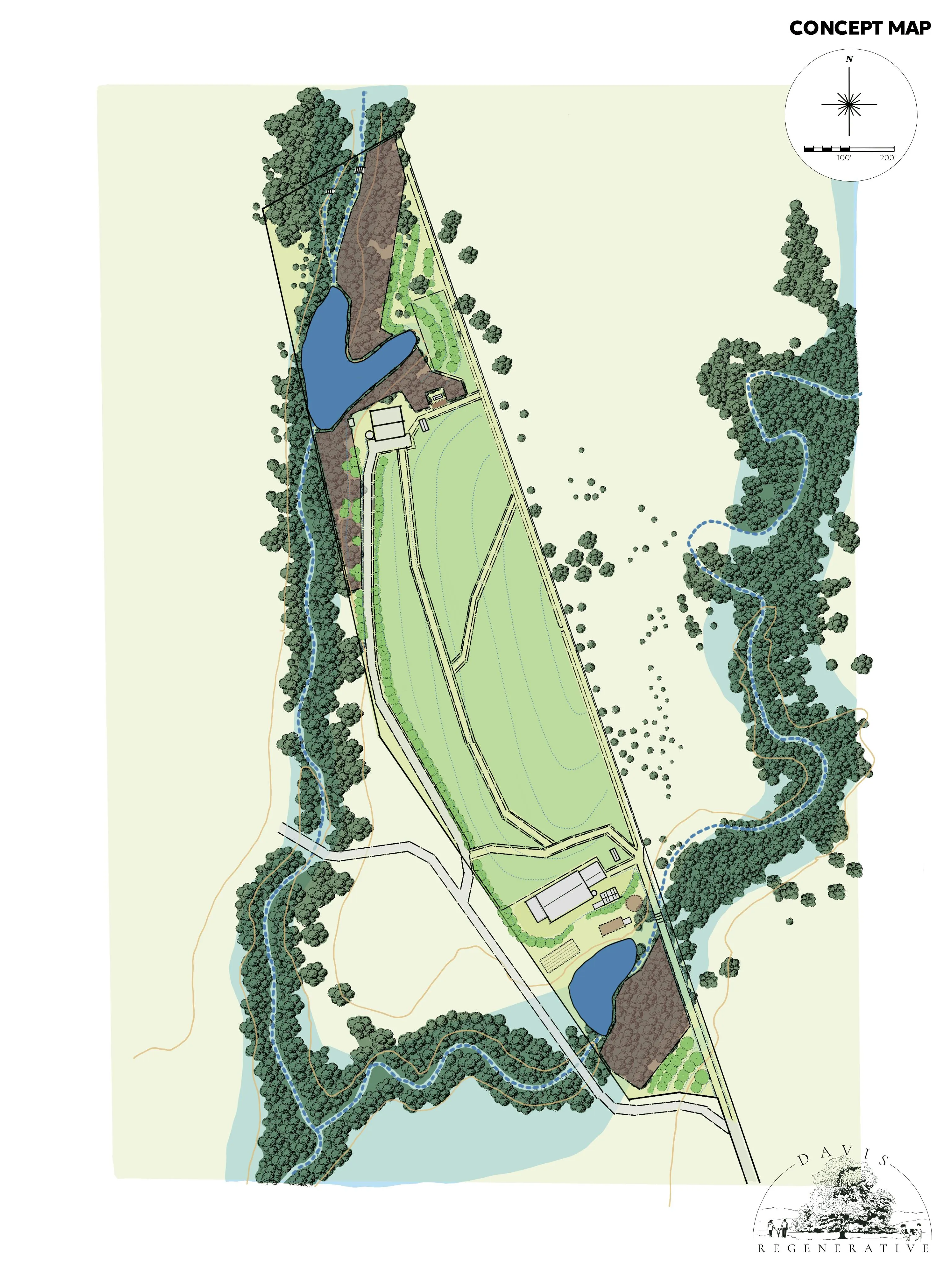The Hidden Costs of Poor Design
The statistics are sobering: our market research shows that over 60% of new homesteading projects face major setbacks within their first three years, with poor initial planning being the primary cause.
These setbacks often include:
- Soil degradation from improper water management
- Building placement that creates ongoing maintenance headaches
- Infrastructure that needs frequent replacement or redesign
- Animal systems that create more work than value
- Gardens that struggle against rather than work with the environment
The financial impact can be severe, with poorly designed homesteads often requiring 2-3 times more investment over their first decade compared to well-designed properties. Money isn't the only factor, though: poor design can cost you time, energy, and lead to discouraged homesteaders abandoning their dreams entirely.
A Multi-Generational Foundation: Understanding Your Land's Natural Systems
At Davis Regenerative, we emphasize starting with a thorough analysis of your property's inherent characteristics. These permanent features form the foundation of your design:
Water Patterns
- Natural water flow and drainage
- Annual rainfall patterns and seasonal variations
- Existing water sources and potential catchment areas
- Flood prone zones and dry spots
Topography and Microclimates
- Solar aspect and shading throughout seasons
- Wind patterns and natural shelterbelts
- Frost pockets and thermal mass opportunities
- Slope and erosion considerations
Soil and Vegetation
- Soil types and their distribution
- Existing plant communities
- Native species indicators
- Problem areas and opportunities
The Power of Phased Implementation
Successful homestead design isn't about doing everything at once - it's about planning everything out in strategic phases that build upon one another. Our recommended sequence:
Phase 1: Foundation Systems (Years 1-2)
- Water management infrastructure (swales, ponds, keyline)
- Access systems (roads, paths)
- Initial soil building
- Windbreak and shelter belt plantings
Phase 2: Core Infrastructure (Years 2-3)
- Main buildings and utilities
- Primary garden areas
- Basic animal systems
- Energy systems
Phase 3: Enhancement and Optimization (Years 3+)
- Value-added infrastructure
- Advanced water storage
- Specialized growing areas
Design Principles for Success
Successful homestead designs consistently incorporate these key principles:
Stacking Functions
Every element should serve multiple purposes. For example,
- Windbreaks that also produce fruits and timber
- Ponds that provide irrigation, fire protection, and habitat
- Animals that manage vegetation while building soil
Zones of Use
Organize elements by frequency of use:
- Zone 0-1: Daily use (house, kitchen garden)
- Zone 2: Weekly use (main gardens, small livestock)
- Zone 3: Monthly use (orchards, grazing areas)
- Zone 4: Seasonal use (woodlots, forage areas)
- Zone 5: Wildlife and conservation areas
Energy Efficiency
Design to minimize ongoing inputs:
- Gravity-fed water systems where possible
- Solar aspect optimization for buildings
- Natural livestock movement patterns
- Closed-loop nutrient cycling
The Economics of Good Design
While proper design requires upfront investment in planning and implementation, the long-term benefits are substantial. Labor, infrastructure, and time costs are much lower while the beauty and fertility of the landscape is enhanced. The need for external inputs is also greatly reduced.
Beyond Survival: Creating a Thriving System
The ultimate goal of homestead design isn't just survival - it's creating a regenerative system that:
- Builds soil year after year
- Increases in productivity over time
- Requires less input as it matures
- Provides multiple yields and income streams
- Creates habitat and ecological value
- Supports multi-generational sustainability
Getting Started
Before breaking ground on your homestead:
- Spend time observing your land through all seasons
- Document existing features and patterns
- Create a detailed base map
- Develop a phased implementation plan
- Start with water management systems
- Build infrastructure that can grow with you
At Davis Regenerative, we've seen how proper design can transform challenging properties into thriving homesteads. Whether you're starting from scratch or looking to optimize an existing homestead, taking the time to plan and design thoughtfully will pay dividends for generations to come.
Ready to create your regenerative homestead? Contact us to learn how we can help you develop a design that works with nature rather than against it.
